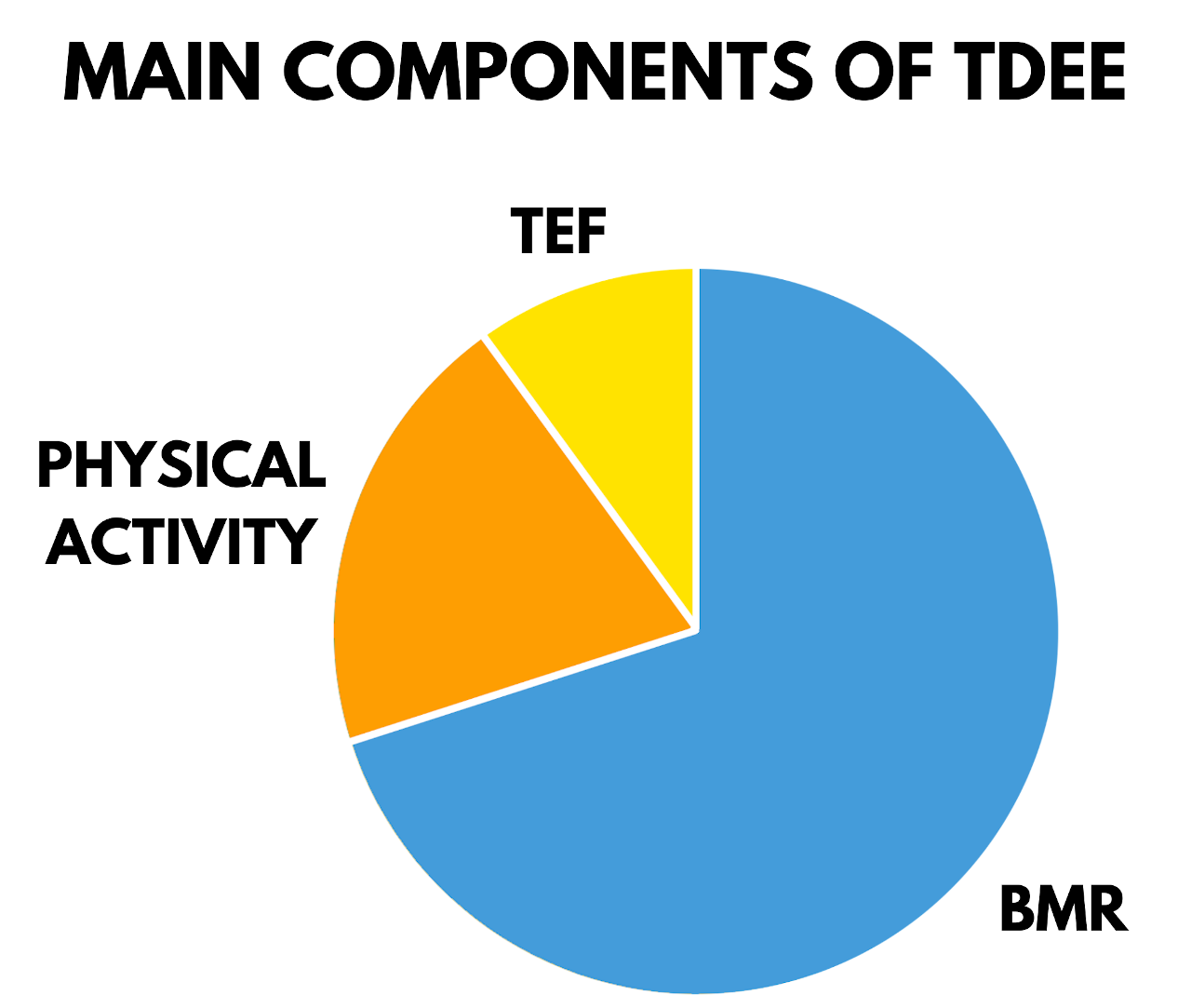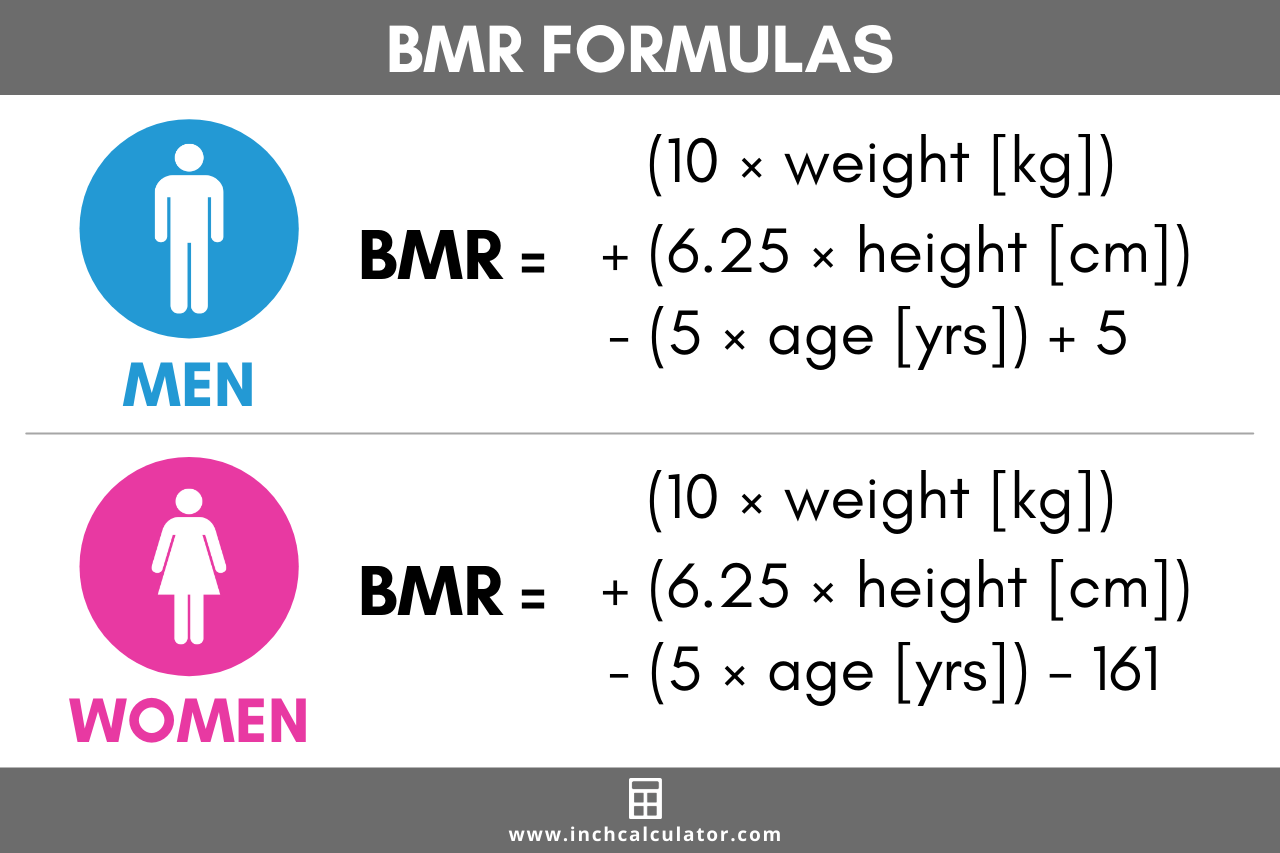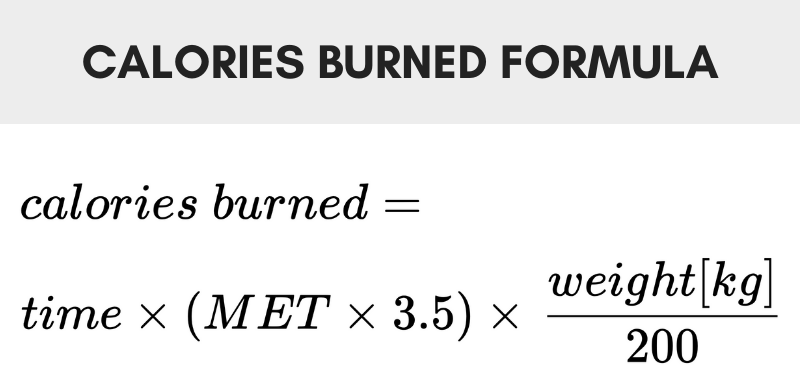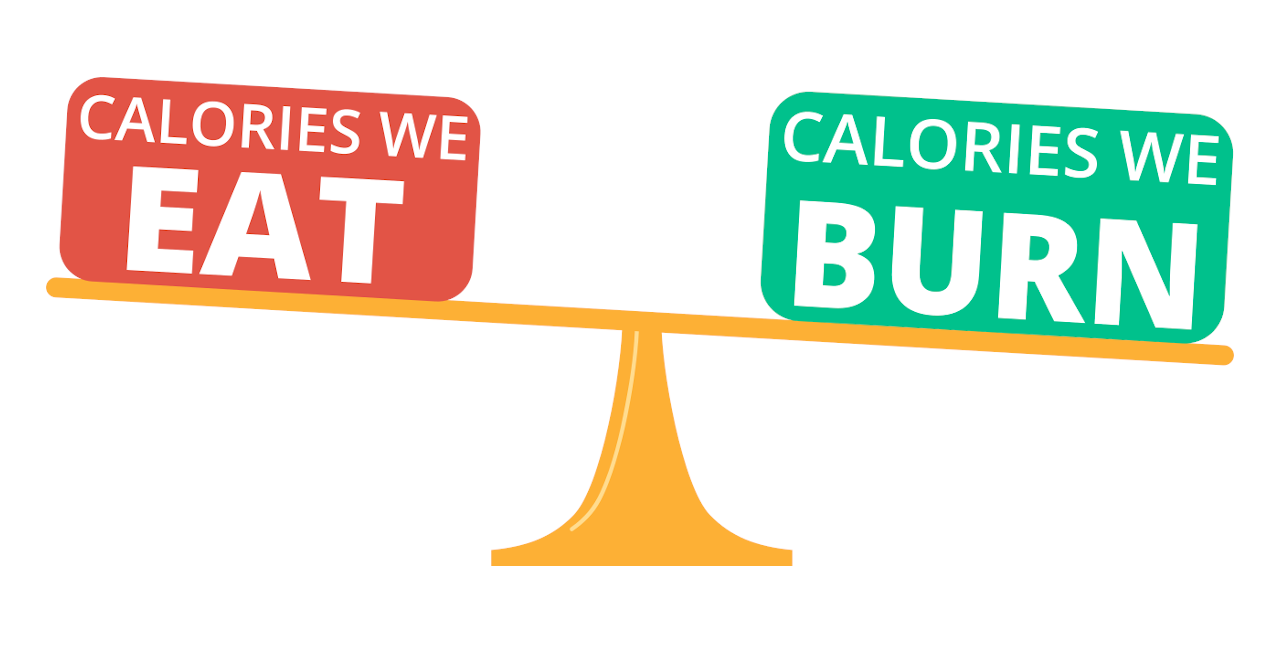Calorie Intake Calculator
Enter your age, sex, height, and weight to calculate how many calories you need per day according to the latest research.
Daily Calories:
| Nutrition Goal | Calories |
|---|---|
| maintain current weight | |
| mild weight loss, goal: ½ lb (¼ kg) per week | |
| moderate weight loss, goal: 1 lb (½ kg) per week | |
| heavy weight loss, goal: 2 lb (1 kg) per week | |
| build muscle or gain weight |
On this page:
How Many Calories Do You Need?
The food you consume every day is converted into energy that is used to fuel your basic bodily functions along with your daily activities and workouts.
This means that the amount of calories you need will depend not only on your basal metabolic rate, but also on your activity level.
When determining your individual calorie needs, the amount you need will also depend on your specific goals and your current weight.
For instance, if you have an active job or perform high amounts of exercise, your calorie needs will be higher than someone who leads a sedentary lifestyle.
In addition, if you are trying to lose weight, you will want to create a calorie deficit, whereas someone trying to gain muscle will actually want to consume more calories.
How to Calculate Calorie Intake Requirements
In order to calculate your total calorie needs, you first need to estimate the amount of energy you burn each day. This is also called your total daily energy expenditure (TDEE).
Your TDEE is composed of three main components:
- Basal Metabolic Rate: Your basal metabolic rate, or BMR, is your resting metabolism. This is the number of calories your body requires to function at complete rest. It includes energetic requirements for all of your normal bodily functions, such as your breathing, heart rate, blood circulation, and brain activity.
- Thermic Effect of Food (TEF): This is the number of calories you use to digest, absorb, and metabolize your food. TEF is typically no more than 10% of your BMR.[1] However, it is also influenced by the amount of food and the quality of food that you eat, since higher amounts of food consumption requires more energy to digest.
- Thermic Effect of Physical Activity (TEPA): This is the number of calories burned during not only your formal workouts, but also the energy expended during non-exercise activities. This is also referred to as NEAT, or non-exercise activity thermogenesis. NEAT consists of your normal daily tasks, like cleaning, moving around your house, or even just fidgeting at your desk.

Step One: Calculate Your BMR
Your BMR is dependent on your own individual physiology. If you want to know your precise basal metabolic rate, this can actually be measured in a lab setting by indirect calorimetry.[2]
Indirect calorimetry measures the heat coming off of your body to measure the number of calories that you burn at rest. However, most people do not have the luxury of having this performed.
Therefore, formulas have been developed to estimate BMR using your age, gender, height, and weight. Some formulas even use lean body mass to more accurately predict BMR in certain populations.

The most widely used formulas for BMR are the Mifflin-St Jeor formula[3] and the Harris-Benedict equations.[4]
Another equation is the Katch-McArdle equation. This formula is slightly different since it also accounts for lean body mass.
This tends to be a good formula for athletes and individuals that are more muscular, since lean muscle is more metabolically active than fat.
Step Two: Calculate the Thermic Effect of Physical Activity
The next step to estimating your total calorie needs is to multiply your basal metabolic rate by an activity factor. Your particular activity factor is based on how active you are at work and also any outside exercise or workouts you perform on a regular basis.
TDEE = BMR × activity factor
Refer to the following chart for the activity favor for various levels of activity.[5]
| Level of Activity | Example | Activity Factor |
|---|---|---|
| Sedentary | Little to no exercise, such as a desk job with no additional physical activity | 1.2 |
| Lightly Active | Light exercise 1-2 days/week | 1.375 |
| Moderately Active | Moderate exercise 3-5 days/week | 1.55 |
| Very Active | Hard exercise 6-7 days/week | 1.725 |
| Extremely Active | Hard daily exercise and physical job or two times a day training | 1.9 |
Your TDEE will give you an estimate of how many calories you should consume on a daily basis to maintain your current weight.
Step Three: Account for the Thermic Effect of Food
The thermic effect of food is harder to estimate and is typically 10% or less of total calories. When estimating caloric needs, this is often left out of equations.
If you want to add this in yourself, you would multiply your BMR by 10%, then multiply this final number by your activity factor.
TDEE Formula Accounting for TEF
TDEE = (BMR × 1.1) × activity factor
How to Account for Changing Calorie Needs
While using an activity factor is a good way to estimate your general calorie needs, some days you will be more or less active than other days.
If you want to measure your calorie needs on each day separately, you can calculate the number of calories that you burn during specific activities and workouts to figure out how many calories you should consume.
This can be helpful on days when you do more intense or vigorous exercise.
The energy that you need to perform any exercise can be expressed as a standard number known as the metabolic equivalent of task, or MET. Activities that are more intense or longer in duration require more energy.
This means that they will burn more calories. Exercises like running and biking have higher MET values than walking or yoga.
The metabolic equivalent of a task is the metabolic rate during that activity compared to the metabolic rate at rest.
So, one metabolic equivalent (1 MET) is defined as the amount of oxygen consumed while sitting at rest. This is equal to 3.5 milliliters of oxygen per kilogram of body weight per minute.[6]
Anything above 1 MET requires more energy than simply resting.
If you want to calculate how many calories you burn during an activity, you need to know its MET value. You can look up the MET values for various activities in the Compendium of Physical Activities.[7]
You can then multiply this number by the amount of time you spent during that exercise along with your weight.
calories burned = time [minutes] × (MET × 3.5) × weight [kg] / 200

If you do this for each task you do throughout the day, this will give you the number of calories you burned, or the thermic effect of physical activity. If you then add this to your BMR, this will give you how many calories you burned for the day.
TDEE = BMR + (total calories burned in activities)
This gives you an alternative way to determine how many calories you need. This process tends to be more time-consuming as you have to do this for each individual task for it to be the most accurate.
Simply multiplying your BMR by an activity factor is a quicker method, but is more of a general estimate since it does not take each activity into account.
How to Calculate a Calorie Deficit
Increasing physical activity is one way to burn calories and help you lose weight. You can also lose weight by decreasing calorie intake. This is done by consuming more nutrient-dense foods, with the option to count calories.
Creating a calorie deficit can be done through both diet and exercise. It is estimated that one pound is about 3,500 calories. So, if you decrease your caloric intake by 500 calories each day, this could result in losing about one pound a week.
This is only an estimate as there are a number of other factors that play a role in weight loss, however it is a good starting point.

The combination of exercise and healthy eating greatly increases the likelihood of not only losing weight, but also maintaining a healthy weight.[8]
Safe weight loss generally means 1-2 pounds a week. More than this can result in adverse health effects and decreased metabolism.[9] You can track your progress using our weight loss percentage calculator.
In addition to creating a calorie deficit, it is important that the diet you follow to lose weight is safe, effective, nutritionally adequate, culturally acceptable, economically affordable, and should factor in long term compliance for maintenance of weight loss.[9]
Too steep of a drop in calorie intake can be detrimental to your health, and you should always discuss your goals with your doctor before starting any weight loss program. All weight loss and fitness programs should always be individualized.
On the other hand, if you are trying to put on muscle, your body will require a calorie surplus. If weight gain is the goal, increase calories by 10% to 20%.[10] In general, this will mean adding about 500 calories a day to your TDEE, but will also depend on your current body weight.
Caloric Intake: Quantity vs. Quality
When determining how many calories you should eat, the type of food you consume is just as important as the amount. All of the food you eat is composed of three main macronutrients: protein, fat, and carbohydrates.
You should break down your calorie intake based on how many grams you consume from each of these food groups. This is referred to as counting macros.
Just like calculating your total calories needed, calculating your macro percentages will be dependent on your health and fitness goals. For example, a bodybuilder will require a higher protein intake than someone who is just looking to maintain general fitness.
If you are following a special eating plan, such as the ketogenic diet, your macro percentages will be very different.
| Goal | Protein | Carbohydrate | Fat |
|---|---|---|---|
| General Fitness | 10-15% | 45-55% | 25-35% |
| Medium to High Intensity Fitness (1-2 hours/day, 4-6 days/week) |
20-30% | 55-65% | 30% |
| Weight Loss | 25-30% | 45-50% | 20-25% |
| Special Diets: Ketogenic Diet | 15-20% | 5-10% | 70-80% |
To get personalized recommendations for the best macro percentages based on your specific goals, it is best to discuss with a dietitian or physician.
You can really target your needs by discussing your goals with a dietitian or physician to determine the best macro percentages for you to follow.
Summing Up
Daily calorie requirements are not a one size fits all number. Every individual will have specific dietary needs based not only on resting metabolism and activity level, but also on fitness, weight goals, hormones and dieting history. It is best to work with a dietitian to help determine the eating plan that is right or your individualized needs.
However, by determining your particular health plan and taking your physical activities into consideration, you can quickly calculate the number of calories you can use as a starting point to achieving your goals.
References
- Rising, R., Harper, I. T., Fontvielle, A. M., Ferraro, R. T., Spraul, M., & Ravussin, E., Determinants of total daily energy expenditure: variability in physical activity, The American journal of clinical nutrition, 1994, 59(4), 800-804. https://pubmed.ncbi.nlm.nih.gov/8147322/
- Delsoglio, M., Achamrah, N., Berger, M. M., & Pichard, C., Indirect Calorimetry in Clinical Practice, Journal of clinical medicine, 2019, 8(9), 1387. https://doi.org/10.3390/jcm8091387
- Mifflin, M. D., St Jeor, S. T., Hill, L. A., Scott, B. J., Daugherty, S. A., & Koh, Y. O., A new predictive equation for resting energy expenditure in healthy individuals, The American journal of clinical nutrition, 1990, 51(2), 241-247. https://pubmed.ncbi.nlm.nih.gov/2305711/
- Roza, A. M., & Shizgal, H. M., The Harris Benedict equation reevaluated: resting energy requirements and the body cell mass, The American journal of clinical nutrition, 1984, 40(1), 168–182. https://doi.org/10.1093/ajcn/40.1.168
- Kelly, M., Resting Metabolic Rate: Best Ways to Measure It—And Raise It, Too, American Council on Exercise, https://www.acefitness.org/certifiednewsarticle/2882/resting-metabolic-rate-best-ways-to-measure-it-and-raise-it-too/
- Jetté, M., Sidney, K., & Blümchen, G., Metabolic equivalents (METS) in exercise testing, exercise prescription, and evaluation of functional capacity, Clinical cardiology, 1990, 13(8), 555–565. https://doi.org/10.1002/clc.4960130809
- Ainsworth BE, Haskell WL, Herrmann SD, Meckes N, Bassett Jr DR, Tudor-Locke C, Greer JL, Vezina J, Whitt-Glover MC, Leon AS., The Compendium of Physical Activities Tracking Guide, Healthy Lifestyles Research Center, College of Nursing & Health Innovation. Arizona State University, https://pacompendium.com/
- Catenacci, V. A., & Wyatt, H. R., The role of physical activity in producing and maintaining weight loss, Nature Clinical Practice Endocrinology & Metabolism, 2007, 3(7), 518-529. https://www.nature.com/articles/ncpendmet0554
- Koliaki, C., Spinos, T., Spinou, Μ., Brinia, Μ. E., Mitsopoulou, D., & Katsilambros, N., Defining the Optimal Dietary Approach for Safe, Effective and Sustainable Weight Loss in Overweight and Obese Adults, Healthcare (Basel, Switzerland), 2018, 6(3), 73. https://doi.org/10.3390/healthcare6030073
- Iraki, J., Fitschen, P., Espinar, S., & Helms, E., Nutrition Recommendations for Bodybuilders in the Off-Season: A Narrative Review, Sports, 2019, 7(7), 154. https://doi.org/10.3390/sports7070154
- Bachus, T., How to Determine the Best Macronutrient Ratio for Your Goals, American Council on Exercise, 2016, April 15, https://www.acefitness.org/resources/pros/expert-articles/5904/how-to-determine-the-best-macronutrient-ratio-for-your-goals/
- Zhu, H., Bi, D., Zhang, Y., Kong, C., Du, J., Wu, X., Wei, Q., & Qin, H., Ketogenic diet for human diseases: the underlying mechanisms and potential for clinical implementations, Signal Transduction and Targeted Therapy, 2022, 7(1), https://doi.org/10.1038/s41392-021-00831-w



